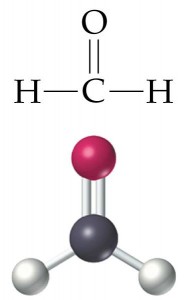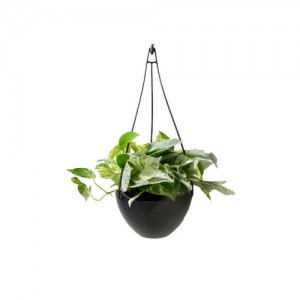As well as decorating and creating a pleasant surrounding, vegetation absorbs CO2 and releases oxygen, it reduces the environments´ temperature and cleans air of contaminant substances.
The “sick” building syndrome;
The problem with the quality of air came up regarding the public petroleum crisis of the 70´s, when buildings were refurbished or designed to reduce energy costs. So, from then onwards, in the name of energetic efficiency, a series of diseases originated or were stimulated encouraged by the contamination of enclosed areas. A clear example are the workers of several industries, such as Beauty Salons, that are exponentially exposed to these chemical compounds as a result of the nature of their day to day. They call it the Sick building effect syndrome. 
The particles in paints, furniture, cleaning products and construction materials can provoke allergic reactions.
Under the same premise of planting more trees in cities in order to reduce the contamination effects, interior plants can also be excellent air purifier. Taking into account that a healthy environment at home is vital to personal well-being and vegetation can assist towards that objective more than is assumed.
Having plants at home complements the labour of ventilation systems as it provides multiple advantages. Aside from decorating and creating an enjoyable environment, they absorb C02 and liberate oxygen, they reduce air temperature amongst many other capacities, and they clean the air of contaminating substances. Here are some of the most common ones;
Formaldehyde: it is found in fibre board furniture, wooden particle board, carpets, upholstery materials, cigarette smoke and plastics. It produces allergic reactions, irritations, asthma or cutaneous diseases.
Trichloroethylene: are located in printing inks, paints, varnish and adhesives. It is a strong carcinogenic that causes skin and eye irritations and can affect liver and kidneys.
Benzene and Xylene: are located in printing inks, oils, plastics and rubber. It can cause skin and eye irritation and a protonated exposure can cause head-aches, loss of appetite or sleepiness.
Carbon Monoxide: it is found in the combustion of motor vehicles, wood, gas and cigarette smoke. It can combine with blood´s haemoglobin and impede its function.
The beneficial effects of plants were defined by the NASA in 1989 throughout a study carried out by Dr. Bill Wolverton, Director of the environmentalist organization Wolverton Environmental Services. Although, not all are capable to purify harmful particles equally. The BBC contacted Wolverton to verify if the recommendations from the report were still current and reduced the list to five plants that will clean the air of homes.
Epipremnum aureus: This hanging plant is very popular and easy to find. As well, it is very resilient and does not require great up keep, it is generally used to decorate offices, shopping centres or other public spaces. It adapts easily to temperatures between 17ºC and 30ºC, it only water when the earth is dry. It is, therefore a very effective plant to absorb Formaldehyde, Benzene and Xylene, avoiding thus eye, throat or skin irritation. As well, studies have proven that they also help eliminate odours.
Spathiphyllums, Peace Lilies: This long lived plant can survive with little light and water. For this reason they usually decorate house hold bathrooms. They grow at temperatures higher than 18ªC and it is recommended to keep them away from air currents. They need more care than the Epipremnum aureus, especially in summer as they need regular watering and taken away from direct light. The positive effects is that it absorbs the five contaminants mentioned before. For higher efficiency it is recommended that the leaves are cleaned regularly.
Bambusoideae: This is an elegant palm originally from Asia that can grow up to three meters high. It requires strong fertile earth and a humid environment for its correct growth. Placing it in our living room will allow us to eliminate the Formaldehyde, Xylene and ammonia out of the air.
Sansevieria trifasciata: It is used very commonly in interior decoration. It has many advantages, it is very resilient to insects and can survive in unfavourable conditions, from -40ºC, to below zero temperatures. Specifically, this plant is ideal in order to eliminate Benzene, Xylene, Trichloroethylene, Formaldehyde and toluene. At night, it absorbes C02 and liberates oxygen.

Ficus: The Ficus or rubber tree is a very grateful and disease resistant plant. It can tolerate high temperatures, although not with abrupt changes. You must take into account that the leaves could be poisonous to some domestic animals as it is a plant that needs space and in a short s pan of time could grow quite quickly. As well as, it is an excellent Formaldehyde filter for the air in your home and an ideal plant to keep the humidity of the environment.
pan of time could grow quite quickly. As well as, it is an excellent Formaldehyde filter for the air in your home and an ideal plant to keep the humidity of the environment.




